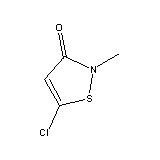
Introduction
Isothiazolinones, specifically Chloromethylisothiazolinone (CIT) and Methylisothiazolinone (MIT), are a class of chemical compounds widely used in water treatment. They possess strong antimicrobial properties due to their ability to disrupt the cellular functions of microorganisms. CIT and MIT are often used in combination due to their synergistic effects, providing enhanced biocidal activity. These compounds are available in various formulations, such as aqueous solutions or concentrates, and can be easily incorporated into water treatment systems.
Key Applications in Water Treatment
Industrial Water Treatment
In industrial settings, such as cooling towers, boilers, and piping systems, CIT/MIT are essential for preventing biofouling and corrosion. Biofouling, caused by the growth of microorganisms like bacteria, fungi, and algae, can reduce heat transfer efficiency in cooling towers and boilers, leading to increased energy consumption and potential equipment damage. CIT/MIT inhibit the growth of these microorganisms, thereby maintaining the performance and lifespan of industrial water systems. For example, in a large chemical manufacturing plant, the use of CIT/MIT in the cooling water system has significantly reduced the frequency of cleaning and maintenance, saving both time and costs.
Municipal Water Treatment
Municipal water treatment plants rely on CIT/MIT to disinfect and purify water supplies, ensuring the delivery of safe drinking water to the public. These compounds effectively kill a wide range of pathogens, including bacteria, viruses, and protozoa, that may be present in the water source. By eliminating these harmful microorganisms, CIT/MIT help prevent the spread of waterborne diseases such as cholera, typhoid, and giardiasis. In a city's water treatment facility, the addition of CIT/MIT at specific stages of the treatment process has enabled the plant to meet strict regulatory standards for water quality.
Swimming Pool Water Treatment
To maintain clean and safe swimming pool water, CIT/MIT are widely used to control the growth of bacteria and algae. Public and private swimming pools are prone to contamination from swimmers, as well as environmental factors, which can lead to the rapid growth of microorganisms. CIT/MIT prevent the formation of harmful algal blooms and keep bacterial levels in check, ensuring a healthy swimming environment. For instance, a popular community swimming pool has seen a significant improvement in water clarity and reduced incidents of skin and eye irritations since implementing a CIT/MIT - based treatment regimen.
Efficacy in Sterilization
Against Bacteria
CIT/MIT exhibits potent antibacterial activity by targeting essential cellular components and metabolic processes of bacteria. It disrupts the integrity of bacterial cell walls and membranes, leading to leakage of intracellular contents and subsequent cell death. For example, in a study conducted in a hospital's water supply system, the addition of CIT/MIT effectively eliminated common pathogenic bacteria such as Escherichia coli and Pseudomonas aeruginosa, reducing the risk of nosocomial infections.
Against Fungi and Yeasts
Fungi and yeasts can cause significant problems in water systems, including the formation of biofilms and the spoilage of materials. CIT/MIT act by inhibiting the growth and reproduction of these microorganisms. They interfere with fungal cell wall synthesis and disrupt key enzymatic pathways involved in metabolism. In a food processing plant, the use of CIT/MIT in the water used for equipment cleaning and rinsing has prevented the growth of mold and yeast, ensuring the quality and safety of the processed products.
Against Algae
Algae growth in water systems can lead to a variety of issues, such as reduced water clarity, unpleasant odors, and the production of harmful toxins. CIT/MIT prevent algae growth by inhibiting photosynthesis and other essential metabolic processes. They disrupt the synthesis of chlorophyll and other pigments, thereby impeding the ability of algae to convert sunlight into energy. In a municipal water reservoir, the application of CIT/MIT has effectively controlled the growth of nuisance algae, maintaining the aesthetic and ecological quality of the water.
Advantages of Using Isothiazolinones (CIT/MIT)
Broad-Spectrum Activity
One of the significant advantages of CIT/MIT is their broad-spectrum antimicrobial activity. They are effective against a wide range of microorganisms, including bacteria, fungi, and algae. This versatility reduces the need for using multiple biocides, simplifying water treatment processes and potentially reducing costs. For example, in a water system where both bacterial and fungal contaminants are present, CIT/MIT can simultaneously target and eliminate both types of microbes, providing comprehensive protection.
Low Toxicity to Humans and the Environment (at recommended doses)
When used at the recommended concentrations, CIT/MIT exhibit relatively low toxicity to humans and the environment. They have been extensively studied and approved for use in various applications, with proper safety guidelines in place. Unlike some traditional biocides that may have persistent and harmful effects, CIT/MIT can be degraded in the environment, minimizing long-term ecological impacts. For instance, in a wastewater treatment plant, the use of CIT/MIT allows for effective disinfection without significantly affecting the surrounding ecosystem when discharged in accordance with regulations.
Compatibility with Other Water Treatment Chemicals
CIT/MIT are highly compatible with other commonly used water treatment chemicals. They can be used in conjunction with corrosion inhibitors, scale inhibitors, and surfactants without significant adverse interactions. This compatibility enables the formulation of comprehensive water treatment solutions that address multiple aspects of water quality and system protection. In an industrial cooling water system, CIT/MIT can be combined with a scale inhibitor to prevent both microbial growth and scale formation, ensuring the efficient operation of the system and extending the lifespan of equipment.
Conclusion
Recap of the Key Applications and Benefits
Isothiazolinones (CIT/MIT) have proven to be invaluable in water treatment and sterilization. Their applications span industrial, municipal, and swimming pool water treatment, effectively combating bacteria, fungi, and algae. The advantages of using CIT/MIT include broad-spectrum activity, low toxicity at recommended doses, and compatibility with other water treatment chemicals. These properties make them a preferred choice in many water treatment scenarios, contributing to the safety and quality of water resources.
Future Perspectives and Research Directions
Despite their current effectiveness, ongoing research is needed to further optimize the use of CIT/MIT. Future studies could focus on enhancing their stability under different environmental conditions, improving their biodegradability to minimize any potential long-term environmental impacts, and developing more sensitive and accurate methods for monitoring their concentrations in water systems. Additionally, as microbial resistance continues to be a concern in various fields, investigations into the potential for resistance development against CIT/MIT and strategies to mitigate it would be valuable. This could involve exploring combinations with other biocides or alternative treatment methods to ensure the long-term efficacy of water treatment processes.











